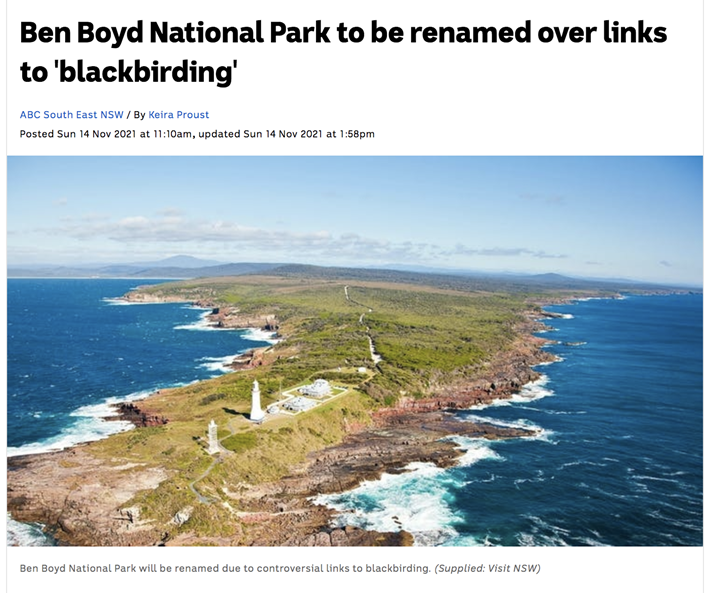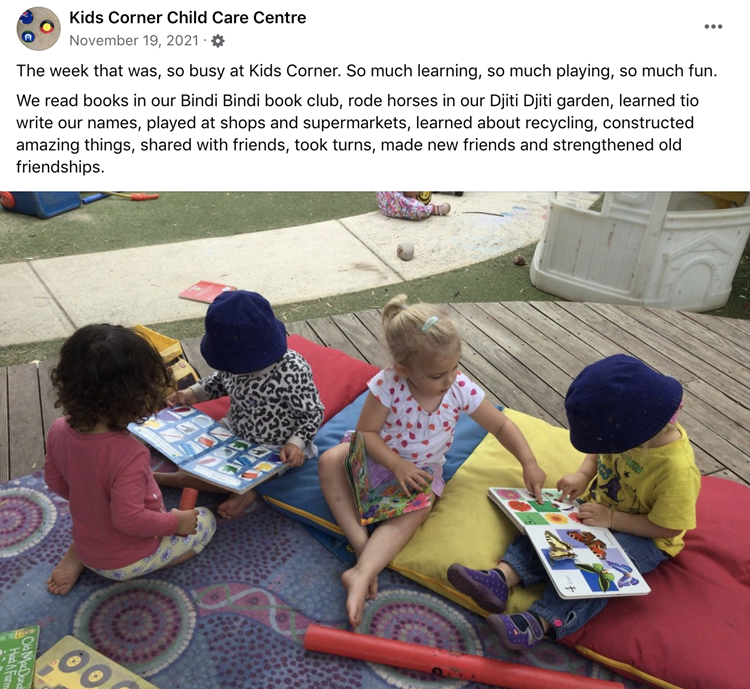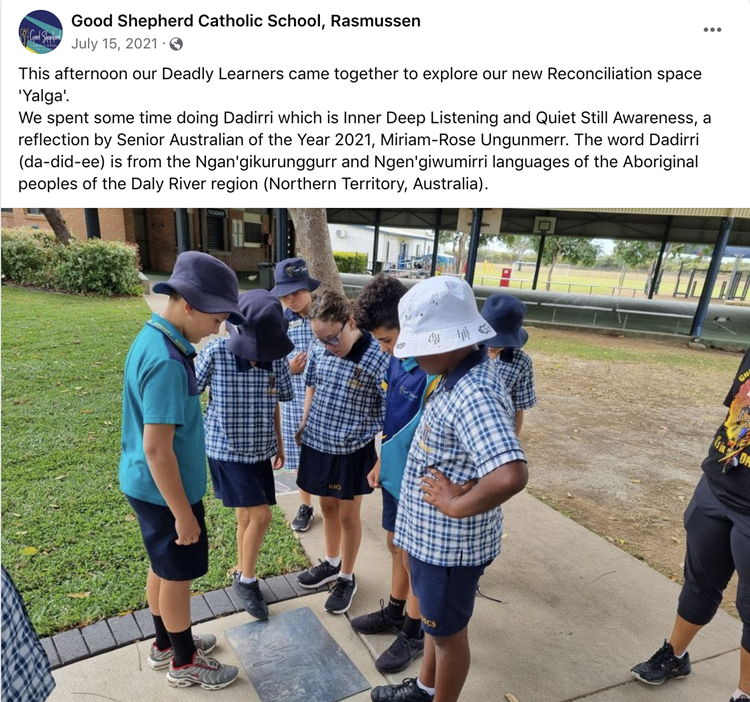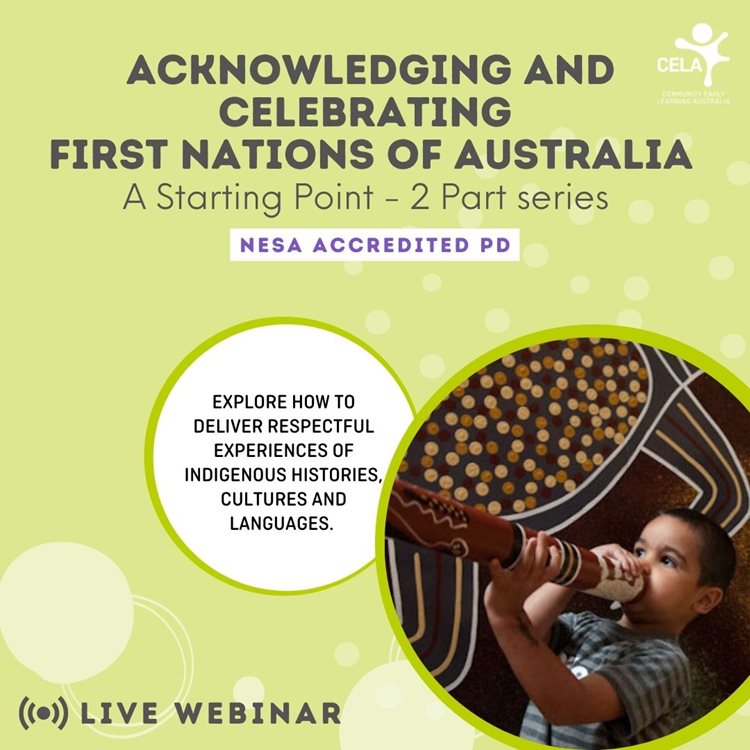Replacing European names, which more often than not, reflect a painful colonial past, can be a wonderfully positive move forward in terms of building on reconciliation. Using traditional First Nations names for places both acknowledges and celebrates the connection of First Nations people to those places; long-lasting connections which span tens and tens of thousands of years.
Name changes are significant in that they are a step in the multi-layered truth-telling process; acknowledging foremost, Aboriginal connection to Country. Aboriginal people hold knowledge, understanding, obligation and custodianship of the physical and cultural landscape, often expressed as Connection to Country.
As Carol Vale, Dunghutti woman and Director of Indigenous Place Making Consultancy, Murawin, tells me:
Cultural landscapes comprise ongoing interrelationships between past and present histories and they importantly preserve cultural values and practices. When Aboriginal people speak of cultural landscapes, this is generally inclusive of the footprint of their traditional boundaries whilst also recognising that there are connections to neighbouring clan group’s traditional lands. We are connected through Country which includes our songs, dances, stories and language.
Returning the official name of a place to its original name then, is a powerful reminder to all that we are living within a cultural landscape; we are and always have been, living on Aboriginal land.
Across the country, we have seen many examples of this in 2021, including Ben Boyd National Park on NSW's far south coast, which will be renamed in the language of Traditional Custodians recognising the Aboriginal cultural heritage of the area. This followed requests from Aboriginal communities to rename the park because of Ben Boyd's association with 'blackbirding', a practice that involved the coercion of people through deception or kidnapping to work as slaves or poorly paid labourers.

2021 marked a significant year for acknowledgement of Traditional Place Names
In 2021, we also saw the Traditional Place Name campaign which was started by Gomeroi woman Rachel McPhail, gain incredible traction nation-wide. Australia Post has now updated their addressing guidelines to include Traditional Place names, and many businesses are now providing space for Traditional Place names to be included in customer’s addresses on their website check-outs as more and more people are recognising the local Aboriginal place names of the lands on which they live.
Applying First Nations place names in an ECEC setting
The ever-growing public attention around these name changes and interest in Traditional names caused me to reflect on how the significance of Aboriginal names might be applied in the early childhood setting. It is becoming increasingly common to see services using Aboriginal words for various naming purposes, for example to name specific classrooms or buildings. The inclusion of First Nations words in this way can be a beautiful expression of reconciliation and a very visual demonstration that your service celebrates their First Nations culture.
If this is something you are considering for your service, you might ask the questions:
-
How can I approach this in a respectful way?
-
Where can I find the words ?
-
Do I need permission to use the words?
Consider your local context and consult your local community
Every situation will be different around the use of First Nations language, depending on what Country you are located on. There are some areas where language has been well retained and is widely known and commonly used in everyday contexts. You may find you have easy access to a range of well-known words of your local language.
In other areas, local words and language may be difficult to find, as the impacts of colonisation has resulted in devastating language loss across much of Australia. In areas like this, you may also find that the use of language words is a contentious issue; there may be differing local groups who claim connection to the area you are on, and there may be differing spellings and pronunciations of words. Given this, language can sometimes be a tricky space to navigate, but with careful and deliberate communication with your local community, whether this is through your local Aboriginal land councils, cultural centres or local Aboriginal families or businesses, you will find the value-add of using Aboriginal names in your service well worth the effort.
What are other services doing to acknowledge Traditional language and place names?
To learn more about how other services and schools have gone about using Aboriginal words in this way, I spoke with several early childhood services and schools.
Promoting local language and inclusion — naming rooms and buildings
Kids Corner Child Care Centre in Lake Coogee, Western Australia, on Wudjuk Noongar land, have their children's rooms, library and kitchen all named as Noongar words. Centre owner, Karen, led this naming process and involved families by having them vote for their name choices. They use “Djiti Djiti” for their kindy room; named after the Willy Wag Tail birds that often come in the room to visit. Their toddler room is “Bindi Bindi” (butterfly) and their babies room is “Walken” which means rainbow. Their kitchen is “Menengy” meaning cooking/food place and their library space is “Kadijiny” meaning knowledge.

Image via @kidscornerchildcarecentre
There are also several schools on Noongar country that have encapsulated the six Noongar seasons into the names of their buildings. Woodlupine School and Craigie Heights Primary Independent School for example, have both named their learning blocks after the Noongar seasons. Doing so has meant that students have been provided an opportunity to learn the names and pronunciations of the season names, as well as when they occur, and what are the seasonal indicators in terms of plants, animals and weather that are associated with each season.
Good Shepherd Catholic School in Townsville, which has designed an outdoor Reconciliation Space that they have carefully named 'Yalga', a name which was approved by local traditional owners. As one of the teachers told me, “Yalga reminds us of our way - where we have come from, where we are going and what we may encounter along the way.” It is a meaningful inclusion of an Aboriginal name chosen with direct community input.
 Image via @goodshepherdcatholicschool
Image via @goodshepherdcatholicschool
In 2020, Bourke Street Public School in Redfern renamed its sports houses from colonists to Aboriginal words; with Gadi (grass tree), Burra (eel), Mulgu (black swan) and Ngurra (Country), replacing their former colonial names.
Leading First Nations artists Tony Albert, Blak Douglas, Thea Perkins and Nicole Monks worked with parents at Bourke Street Public School to create the new Aboriginal school house names and symbols.
Increasing Culture awareness — Learning programs named after local Dreaming stories
Beldon Primary School in Western Australia, who after reflecting on the importance of Aboriginal culture and inspired by a local Dreaming story, changed the names of their learning blocks after the three gifts that were provided by the Waugal during the dreaming.
The Waugal created the waterways throughout Perth and the South West, and gave three gifts; land, family and knowledge. This school chose the names ‘Boodjar’ (the land), for their junior block, ‘Moort’, meaning family, for their middle school block and ‘Kaartdijin’ (knowledge) for their senior block.
These names came about after school staff, in collaboration with the school community, created a plan to improve the Culture Awareness at Beldon Primary School, with a focus on knowledge, understanding and reconciliation.
Demonstrating a commitment to reconciliation and strengthening community connections
Several educators highlighted to me the importance of community engagement through the process; through collaborating with their local Aboriginal community in these naming initiatives they were able to come up with beautiful local words for their service, as well as being able to use the activity as a way of strengthening local community connections.
A common thread across all of these examples is the passion of the school or service involved in actively demonstrating their commitment to reconciliation and in celebrating their First Nations culture through inclusion of Aboriginal words.
Further reading/watching:
ABC News looks at how places get their names and why cities and towns around Australia are adopting Aboriginal names - watch the video.
Celebrating K’gari: why the renaming of Fraser Island is about so much more than a name - read the article
CELA professional development relating to this topic
 LEARN MORE
LEARN MORE